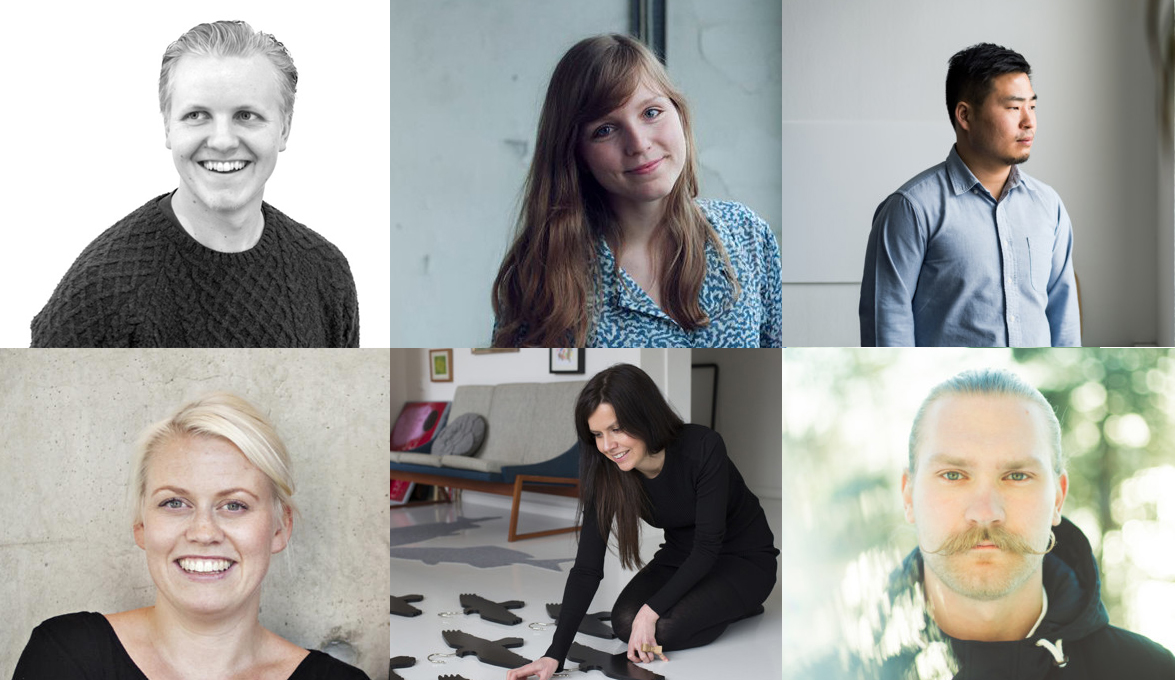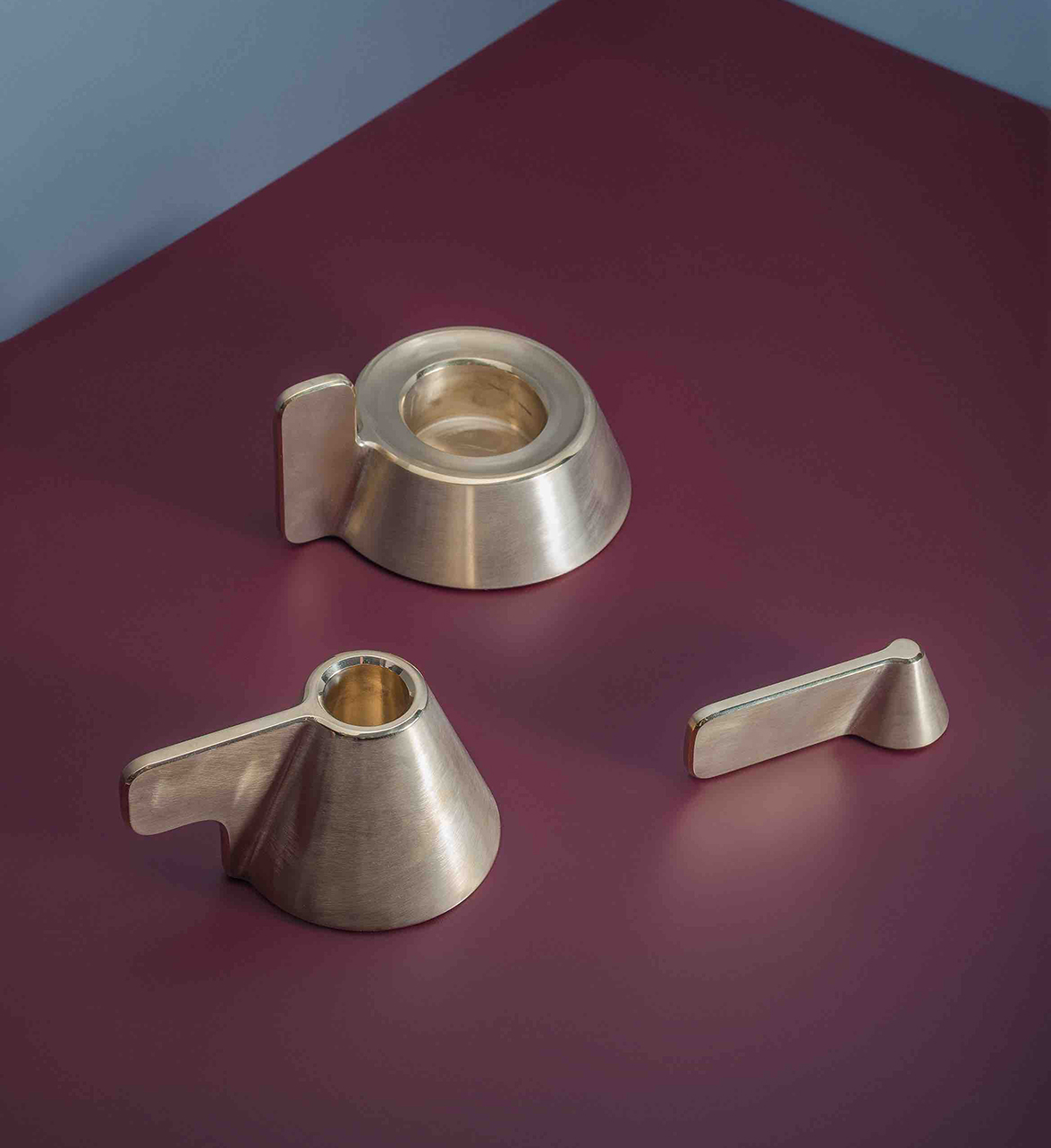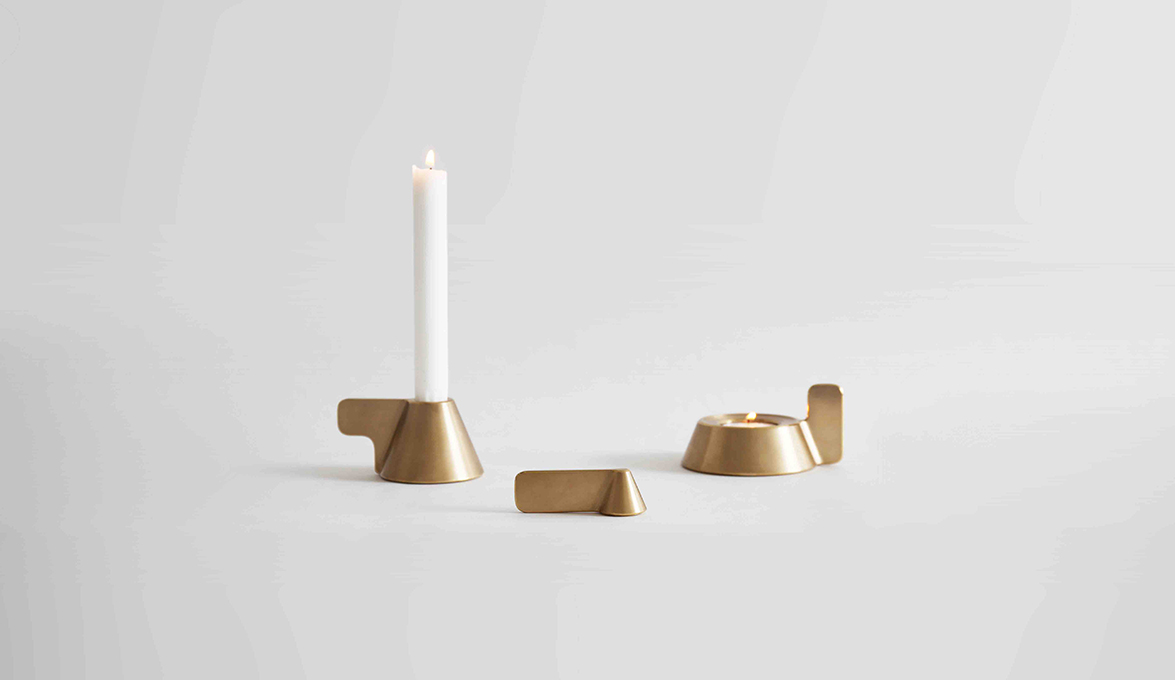Meet the talented young designers nominated for the Formex Nova Design Award 2017

The award Formex Nova was established by the Formex interior design fair seven years ago to promote high quality Nordic design. It goes to a young designer who is working in the Nordic region. At 2017 five finalists are Antrei Hartikainen, Emilie Dissing Wiehe, Qian Jiang, Sara Polmar, Ingibjörg Hanna Bjarnadóttir, and a Honorable Mention for Markus Barvestig.
This award goes to a young designer who is working in the Nordic region, and the winner will be selected by an expert jury. The 2017 jury consists of Lotta Lewenhaupt, journalist and author; Kerstin Wickman, professor in design history; Ewa Kumlin, President of Svensk Form; and Anders Färdig, founder and CEO of Design House Stockholm. The 2017 guest jury member is designer Mattias Stenberg.
The award includes an exhibition at the spring Formex, a sponsored activity up to a value of SEK 50,000 and a specially designed diploma, this year designed by Justin Boysen, Sweden. The award will be presented in the evening on Wednesday, August 23, in conjunction with the opening of Formex. Presented in partnership with Trendgruppen PR. The nominees for Formex Nova were selected in collaboration with Iceland Design Centre, Design Forum Finland and Klubben (Norwegian Designers Union).
Antrei Hartikainen - Finland
 Antrei Hartikainen is 25 years old and a furniture master with a degree in both woodworking and carpentry. He lives in Fiskars, Finland, where he works for the Finnish wood and design company, Nikari Oy, and at the same time pursues his own design projects. Antrei Hartikainen has concentrated on wood design: design, prototypes and manufacturing of wood-based products, objects, furniture and sculptures.
Antrei Hartikainen is 25 years old and a furniture master with a degree in both woodworking and carpentry. He lives in Fiskars, Finland, where he works for the Finnish wood and design company, Nikari Oy, and at the same time pursues his own design projects. Antrei Hartikainen has concentrated on wood design: design, prototypes and manufacturing of wood-based products, objects, furniture and sculptures.
The design of his own simple furniture stands as a counterweight to his more unique, sensitive and poetic smaller objects. In most of his works he highlights the many possibilities of wood. He finds inspiration in nature, in particular for his sculptures and smaller objects. He is also inspired by how light and shadows play on different types of surfaces.
The jury's motivation: Antrei Hartikainen's works are not only beautiful, sensual and ethereal, they are also based on a high level of craftsmanship. He brings beauty to everyday tasks through his cleverly designed everyday items. His range is truly impressive, including everything from functional products to pure art.

 Emilie Dissing Wiehe - Denmark
Emilie Dissing Wiehe - Denmark
 Emilie Dissing Wiehe is 29 years old and lives in Tikøb in Nordsjälland. She graduated in 2015 from the Fine Arts Schools of Architecture, Design and Conservation at the Royal Danish Academy with the MA project, RO - til forvirrede hoveder og rastløse hænder (A quiet now - for confused heads and restless hands). The project focuses on dementia and how to lessen the confused and uncertain feelings that often accompany this illness. She often uses her background as a textile designer to create products with a special tactile and visual dimension. She would like her design to affect people's everyday routines, stimulate their senses and add a playful, poetic feel to their surroundings.
Emilie Dissing Wiehe is 29 years old and lives in Tikøb in Nordsjälland. She graduated in 2015 from the Fine Arts Schools of Architecture, Design and Conservation at the Royal Danish Academy with the MA project, RO - til forvirrede hoveder og rastløse hænder (A quiet now - for confused heads and restless hands). The project focuses on dementia and how to lessen the confused and uncertain feelings that often accompany this illness. She often uses her background as a textile designer to create products with a special tactile and visual dimension. She would like her design to affect people's everyday routines, stimulate their senses and add a playful, poetic feel to their surroundings.
She often focuses on a specific demographic - for example, children or the elderly - since she believes that design can contribute an aesthetic, emotional value to products that normally are made to be practical and functional. She appreciates and is inspired by collaborations with other professions and believes that projects that reach across professional borders often lead to the strongest design solutions.
The jury's motivation: Emilie Dissing Wiehe is a socially driven designer. Her designs are playfully experimental, sensual and tactile, and they promote interactivity. She makes products that have a clear idea and that focus less on the visual but so much more on the functionality for the user.

 Qian Jiang - Sweden
Qian Jiang - Sweden
 Qian Jiang is 31 years old and graduated with a Bachelor's degree from Jiangnan University in 2008. He worked as an industrial designer at two design firms in Shanghai until 2011, after which he started a Master's degree in industrial design at Lund University. From 2012 to 2014, he worked as a furniture designer at two design firms in Copenhagen, Nicholai Wiig Hansen Studio and Normann Copenhagen. He is currently based in Stockholm, where he established Studio Dejawu in 2015 with a focus on the design of furniture and everyday items. The balance between function and aesthetics is important, and Qian Jiang always includes a story in his design - a feeling of unfamiliar familiarity that triggers the memory.
Qian Jiang is 31 years old and graduated with a Bachelor's degree from Jiangnan University in 2008. He worked as an industrial designer at two design firms in Shanghai until 2011, after which he started a Master's degree in industrial design at Lund University. From 2012 to 2014, he worked as a furniture designer at two design firms in Copenhagen, Nicholai Wiig Hansen Studio and Normann Copenhagen. He is currently based in Stockholm, where he established Studio Dejawu in 2015 with a focus on the design of furniture and everyday items. The balance between function and aesthetics is important, and Qian Jiang always includes a story in his design - a feeling of unfamiliar familiarity that triggers the memory.
Design for Qian Jiang is like keeping a diary. It captures his memories of people and happy moments, documenting his experiences and investigating how they can be transformed into objects to which people can relate. The result becomes a capsule for the memory. He is energized by this approach and draws inspiration from memories and everyday experiences, in particular happy, invaluable childhood memories.
The jury's motivation: Qian Jiang is an industrial designer - simultaneously poetic and functional. He masters the entire tool chest of a designer, but is never limited by this. His products demonstrate not only a clear awareness of form and a controlled playfulness, but also clever design.

 Sara Polmar - Norway
Sara Polmar - Norway
 Sara Wright Polmar is 35 years old and an Oslo-based designer with a degree in interior architecture and furniture design from Oslo National Academy of the Arts. After graduating in 2011, she started a studio, günzler.polmar, with Victoria Günzler. She is also one of the three initiative takers and founders of the Norwegian Designers Union, a network that aims to promote contemporary Norwegian design and expand the cooperation and feeling of camaraderie between young designers.
Sara Wright Polmar is 35 years old and an Oslo-based designer with a degree in interior architecture and furniture design from Oslo National Academy of the Arts. After graduating in 2011, she started a studio, günzler.polmar, with Victoria Günzler. She is also one of the three initiative takers and founders of the Norwegian Designers Union, a network that aims to promote contemporary Norwegian design and expand the cooperation and feeling of camaraderie between young designers.
Sara Polmar's design places a strong focus on color as well as playfulness and humor. Her work has a clear Scandinavian influence, which is particularly evident in her love for beautiful materials, colors and surfaces. Many of her projects take a well-known material, technique and/or shape and place it in a contemporary or different context; an object or material with strong traditions can gain new meaning and relevance when re-interpreted or presented in a new way or shape.
The jury's motivation: Sara Polmar's work has a strong, graphic feel. Her design is unaffectedly self-evident. Colors and forms are well-chosen, and the color combinations achieve interesting “works of art”. The results are simultaneously highly functional.

 Ingibjörg Hanna Bjarnadóttir - Iceland
Ingibjörg Hanna Bjarnadóttir - Iceland
 Ingibjörg Hanna Bjarnadóttir is 40 years old and lives in Reykjavík. She has a degree in graphic design from Iceland Academy of the Arts in 2001. She worked as a graphic designer at an advertising firm and freelancer, during which time her interest in product design began to grow. In 2009, she left her job as a graphic designer to start her own company, IHANNA HOME, where she designs products for the home. She initially worked a lot with wood, cement and metal and designed three-dimensional objects.
Ingibjörg Hanna Bjarnadóttir is 40 years old and lives in Reykjavík. She has a degree in graphic design from Iceland Academy of the Arts in 2001. She worked as a graphic designer at an advertising firm and freelancer, during which time her interest in product design began to grow. In 2009, she left her job as a graphic designer to start her own company, IHANNA HOME, where she designs products for the home. She initially worked a lot with wood, cement and metal and designed three-dimensional objects.
Lately, she has partly returned to her roots and is designing graphics and patterns on textiles. She is thus able to give her graphic design background an expression in her product design. She likes to take on common objects in the home, such as hangers, tea towels, bedding and blankets. These household items may be perceived as trivial and perhaps not even noticed, but that is what interests her. She wants to transform them into jewelry for the home, although without the glitter and crazy colors.
The jury's motivation: Ingibjörg Hanna Bjarnadóttir's products are influenced by her very personal design, but she also has both feet planted in Icelandic tradition without ever being nostalgic. Her design has a graphic sharpness and breadth, and she takes a very sympathetic approach to the basic need we have for everyday products.

 Mención de Honor: Markus Barvestig
Mención de Honor: Markus Barvestig
 Markus Barvestig is 27 years old and a furniture and product designer from Stockholm. He trained as a furniture maker and always strives, if possible, to work with his hands to feel the material. He has a simple, clear and pure form, with a high degree of detailing and wellthought-out construction that at the same time offers a twist. Function plays a large role, but is perhaps not always dominant, since he saves room for form and objective as well. An imbalance is sometimes tolerated, when one overpowers the other. He is inspired by working with other professions; this method helps him gain new knowledge and perspectives and in turns helps him develop as a designer.
Markus Barvestig is 27 years old and a furniture and product designer from Stockholm. He trained as a furniture maker and always strives, if possible, to work with his hands to feel the material. He has a simple, clear and pure form, with a high degree of detailing and wellthought-out construction that at the same time offers a twist. Function plays a large role, but is perhaps not always dominant, since he saves room for form and objective as well. An imbalance is sometimes tolerated, when one overpowers the other. He is inspired by working with other professions; this method helps him gain new knowledge and perspectives and in turns helps him develop as a designer.
He is receiving the Honorable Mention for his thesis project, Träsmak, at Carl Malmsten Furniture Studies in 2016: “The project started with my own interest in food, and primarily the process of preparing food, which can be described as food craftsmanship. I find that being able to dedicate time and energy to the process of finding and producing flavors in the ingredients is extremely rewarding. One question that has followed me throughout the project has been, “How can wood affect food preparation?”
 Source: Formex
Source: Formex
Visit the Formex website
Read more news related Formex published at Infurma
Visit the “Fairs & Events” Calendar in Infurma
News Infurma:
Online Magazine of the International Habitat Portal. Design, Contract, Interior Design, Furniture, Lighting and Decoration
